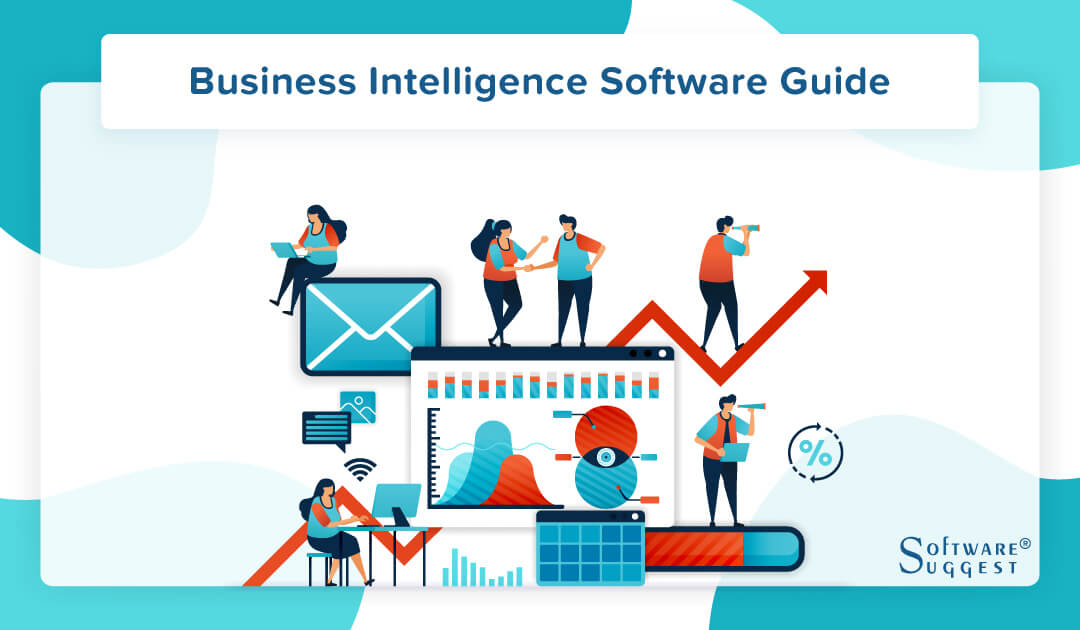
The Ultimate Guide to Business Intelligence Software for Beginners
As a business owner or decision-maker, you understand the importance of making informed decisions to drive growth and success. In today’s data-driven world, business intelligence (BI) software has become a crucial tool for organizations to extract insights from their data and make data-driven decisions. However, with so many options available, it can be overwhelming for beginners to choose the right BI software for their needs. In this article, we’ll provide a comprehensive guide to business intelligence software for beginners, covering the basics, benefits, and features of BI software, as well as tips for selecting the right tool.
What is Business Intelligence Software?
Business intelligence software is a set of tools and technologies that enable organizations to collect, analyze, and visualize data to gain insights and make informed decisions. BI software combines data from various sources, such as databases, spreadsheets, and external data sources, to provide a unified view of an organization’s performance. The primary goal of BI software is to support decision-making by providing timely, accurate, and relevant data to stakeholders.
Types of Business Intelligence Software
There are several types of business intelligence software, each designed to meet specific needs and requirements. Some of the most common types of BI software include:
- Reporting and Analytics: These tools provide basic reporting and analytics capabilities, enabling users to create reports and dashboards to visualize data.
- Data Visualization: These tools focus on presenting data in a visual format, such as charts, graphs, and maps, to help users understand complex data insights.
- Predictive Analytics: These tools use statistical models and machine learning algorithms to forecast future trends and behaviors.
- Big Data Analytics: These tools are designed to handle large volumes of unstructured and structured data, providing insights into customer behavior, market trends, and operational performance.
- Cloud-based BI: These tools are hosted in the cloud, providing users with access to BI capabilities from anywhere, on any device.
Benefits of Business Intelligence Software
Business intelligence software offers numerous benefits to organizations, including:
- Improved Decision-Making: BI software provides timely and accurate data, enabling stakeholders to make informed decisions.
- Increased Efficiency: Automated reporting and analytics capabilities streamline processes, freeing up resources for more strategic activities.
- Enhanced Customer Insights: BI software provides a unified view of customer data, enabling organizations to better understand customer behavior and preferences.
- Competitive Advantage: Organizations that use BI software can respond quickly to market changes, staying ahead of the competition.
- Cost Savings: BI software helps organizations optimize resources, reduce waste, and improve operational efficiency.
Key Features of Business Intelligence Software
When selecting a business intelligence software, consider the following key features:
- Data Connectivity: The ability to connect to various data sources, including databases, spreadsheets, and external data sources.
- Data Visualization: The ability to create interactive and dynamic visualizations, such as charts, graphs, and maps.
- Reporting and Analytics: The ability to create reports and dashboards, as well as perform ad-hoc analysis.
- Predictive Analytics: The ability to use statistical models and machine learning algorithms to forecast future trends and behaviors.
- Security and Governance: The ability to manage user access, ensure data security, and comply with regulatory requirements.
- Scalability and Performance: The ability to handle large volumes of data and provide fast query performance.
- User Interface: An intuitive and user-friendly interface that enables users to navigate and use the software with ease.
Tips for Selecting the Right Business Intelligence Software
Choosing the right business intelligence software can be a daunting task, especially for beginners. Here are some tips to help you make an informed decision:
- Define Your Requirements: Identify your specific needs and requirements, including data sources, reporting requirements, and analytics capabilities.
- Assess Your Data: Evaluate the type, volume, and complexity of your data to determine the right BI software for your needs.
- Evaluate Vendor Options: Research and evaluate different BI software vendors, considering factors such as pricing, support, and customer reviews.
- Consider Cloud-based Options: Cloud-based BI software provides flexibility and scalability, making it an attractive option for many organizations.
- Try Before You Buy: Take advantage of free trials or demos to test the software and ensure it meets your needs.
- Seek Expert Advice: Consult with industry experts or BI consultants to get guidance on selecting the right BI software.
Popular Business Intelligence Software for Beginners
Some popular business intelligence software options for beginners include:
- Tableau: A user-friendly data visualization tool that connects to various data sources.
- Power BI: A cloud-based BI platform that provides reporting, analytics, and data visualization capabilities.
- QlikView: A business intelligence platform that provides data visualization, reporting, and analytics capabilities.
- Sisense: A cloud-based BI platform that provides data visualization, reporting, and analytics capabilities.
- Google Data Studio: A free tool that enables users to create interactive and dynamic visualizations.
Conclusion
Business intelligence software is a powerful tool that can help organizations extract insights from their data and make informed decisions. With so many options available, it’s essential to define your requirements, assess your data, and evaluate vendor options carefully. By following the tips and guidelines outlined in this article, you’ll be well on your way to selecting the right business intelligence software for your organization. Remember to consider cloud-based options, try before you buy, and seek expert advice to ensure you make an informed decision. With the right BI software, you’ll be able to unlock the full potential of your data and drive business success.
Closure
Thus, we hope this article has provided valuable insights into The Ultimate Guide to Business Intelligence Software for Beginners. We hope you find this article informative and beneficial. See you in our next article!


